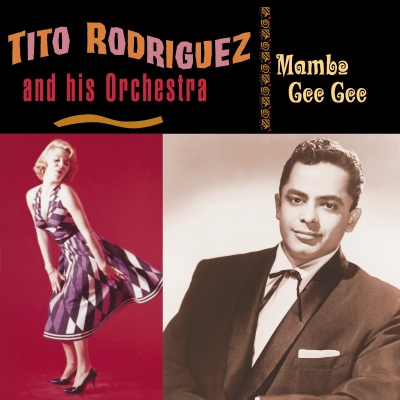
Mambo Gee Gee
Pablo ‘Tito’ Rodríguez was born in Santurce, Puerto Rico, on January 4, 1923. Besides being equally talented as an up-tempo improvising sonero and romantic ballad singer, he was also a percussionist who fronted an extremely tight, professional, and creative big band. Tito Rodriguez made recordings with various orchestras and bands, besides touring and playing Las Vegas, Miami, and other major show business centers. During the 1960s he moved to Puerto Rico for a while, still recording and playing intensively, right up until his untimely death from leukemia in New York in February 1973. Though the 1950s were without doubt the heydays of the U.S. mambo, its formative date is clearly 1947, the time when Tito Rodríguez and Tito Puente organized their own conjuntos. From then on, along with Machito, they were at the very center of the New York style, gaining an enormous popularity over the bands of the time, such as Noro Morales or Pupi Campo. (For his part, Perez Prado rarely transcended the problems caused by his own huge popularity, and he consequently succumbed to the temptation to overmuch dillution). Meanwhile Rodríguez and Puente, for their part, were largely protected from this temptation by their sizeable and knowledgeable Latin and non-Latin public – and also perhaps by the security of a working life centered on the newly-named Palladium Dance Hall, the hip shrine par excellence of Latin Jazz on Broadway, amongst whose habitual public it was not difficult to find the likes of Allen Ginsburg, Marlene Dietrich, Sammy Davis Jr., Leroi Jones, Kim Novak or Marlon Brando. To the Palladium would come Dizzy Gillespie, Max Roach and Charlie Parker, to stimulate and refresh their musical ideas in the torrents of the mambo, the result of which would later flower into one of the most important and dynamic musical hybrids in all the history of popular music of the 20th century. The great era of the New York mambo can be said to date from 1952, when the Palladium Dance Hall switched to an all-mambo policy featuring the big bands of Rodríguez, Puente, and Machito. In fact the band of Tito Rodríguez carried on the highly successful format of using a swingband-type orchestration, with a particular emphasis on the trumpet section, but within an essentially Cuban whole, plus a rhythm section that was pure Afro-Cuban. The Rodríguez sound, thanks to the very musical arrangements of pianists Gilberto López and René Hernandez, as well as those of trumpeter Harold Wegbreit, was exciting and danceable. However, it could be said that Rodríguez’s band was a trifle smoother, for its arrangements were slightly simpler – and although he was a masterful singer, as strong in the fast improvised ‘sonerismo’ as in the romantic boleros – his band was far from being secondary to his vocals.
